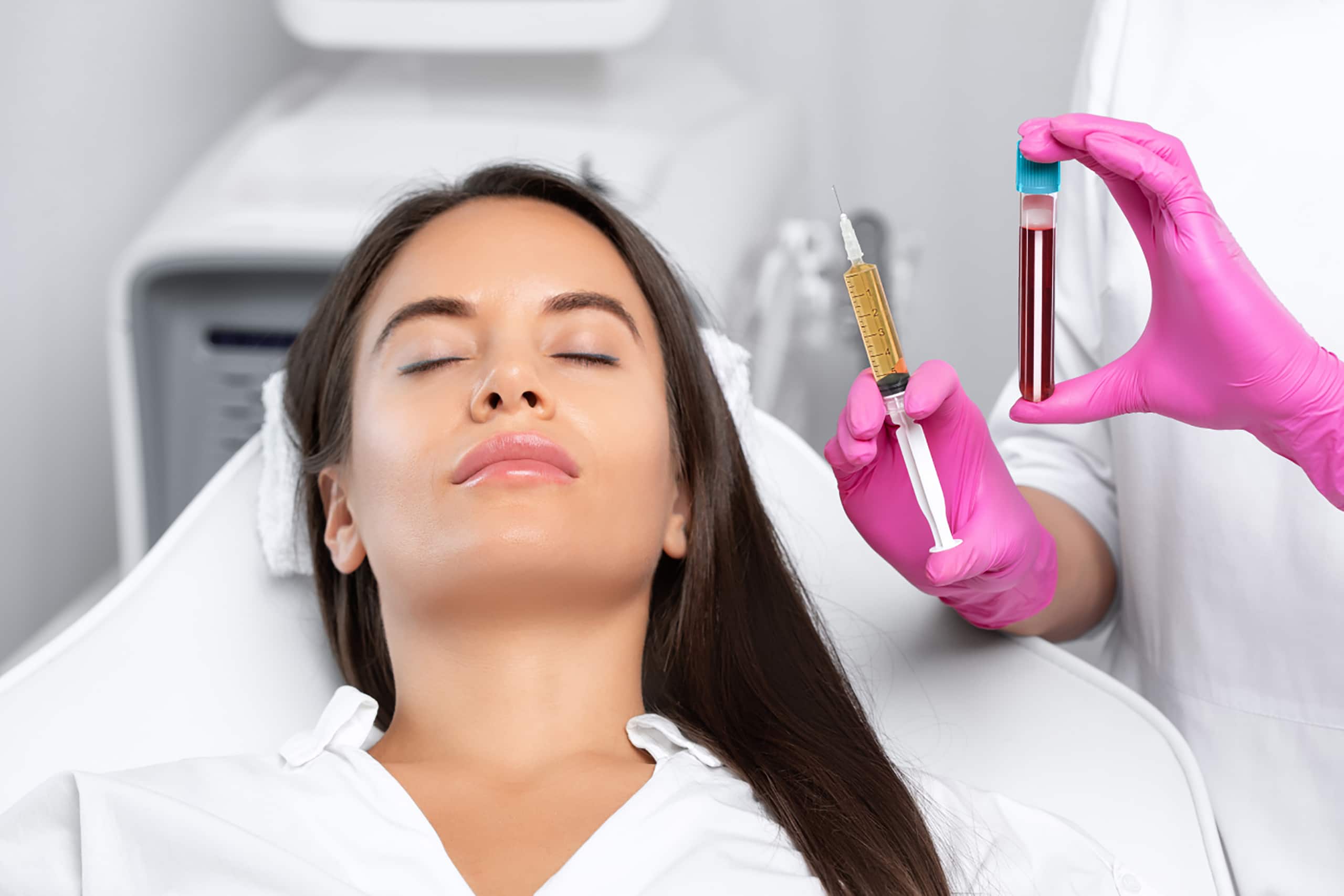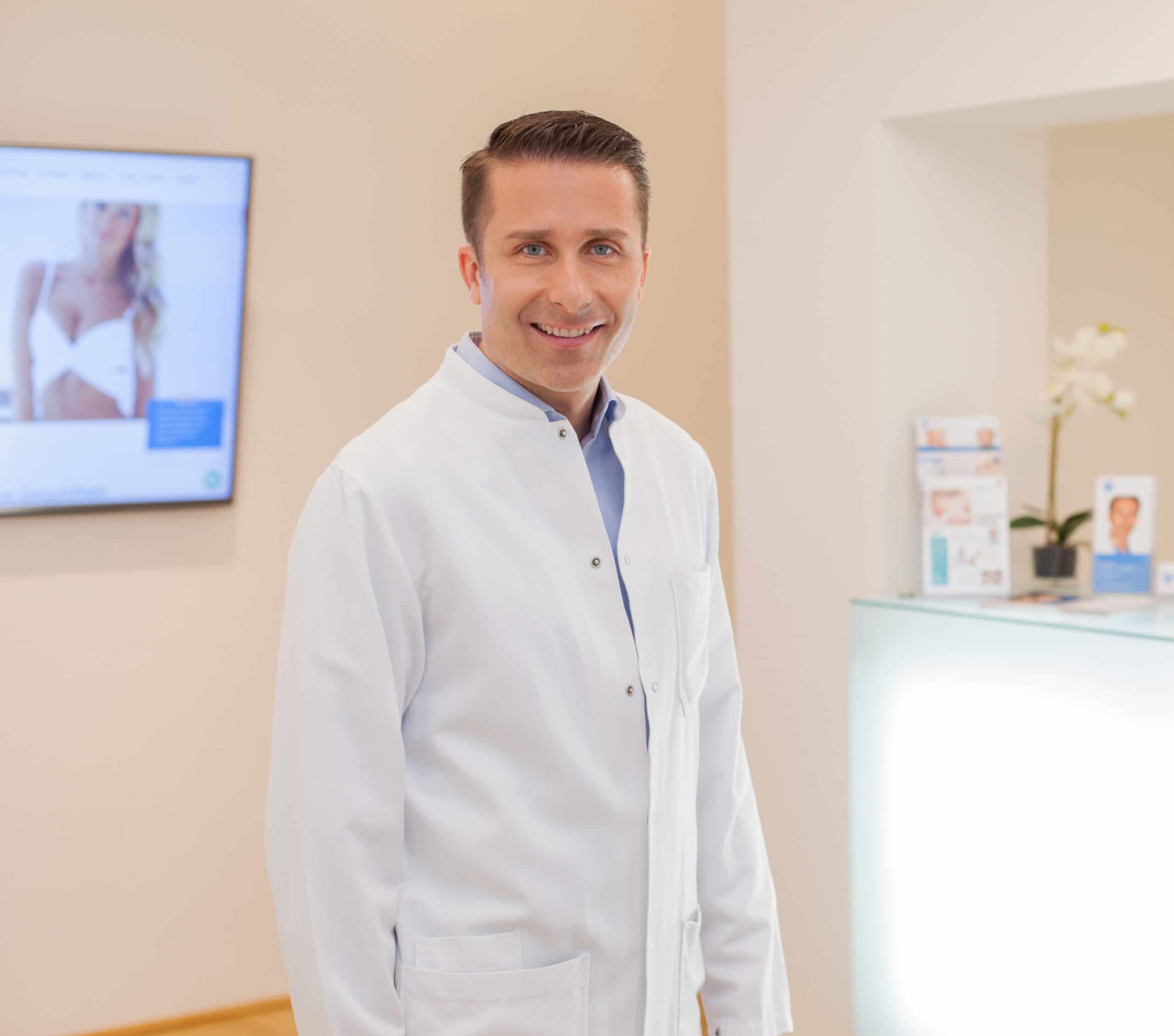Skin aging and various environmental influences cause the skin and the underlying tissue to sag – including on the upper arms. Even after severe weight loss, it can happen that the skin does not recede, and a large flap of skin remains on the upper arm. These so-called “flabby arms” ensure that many of those affected no longer feel comfortable in their skin and are ashamed. As part of an upper arm lift, Dr. Matiasek removes excess skin, reduces unwanted fat deposits and at the same time reshapes and tightens the whole arm. Depending on the scope of the treatment, a classic upper arm lift or the so-called Avelar method is recommended. Both procedures offer aesthetically pleasing results and ensure that your upper arms look more youthful and powerful again.
When is an upper arm lift used?
An upper arm lift is useful if you are dissatisfied with the shape and appearance of your arms and would like a visible change. Wrinkled and slack skin can have various causes and often leads to the so-called flabby arms, which women with a weak connective tissue tend to have. Drooping areas of skin and sagging connective tissue are common consequences of severe weight loss, but the skin and fatty tissue can give in to gravity without great weight fluctuations. Particularly in old age, sagging skin areas are completely normal, as the aging of the skin leads to a loss of elasticity. However, an upper arm lift does not always have something to do with weight and age – flabby arms can also occur in slim people who are genetically predisposed to it. Please note, however: an upper arm lift is not a method of weight loss, but a way to improve the aesthetic appearance of the arms.
Who is an upper arm lift suitable for?
An upper arm lift is basically suitable for everyone who is dissatisfied with the appearance of their upper arms and who would like a visible change to feel good in their skin again. Especially in summer, sagging and hanging areas of skin on the upper arms can be stressful, as many of those affected feel ashamed and therefore do without light clothing that is appropriate to the weather. An upper arm lift is therefore suitable for all men and women who suffer from sagging and sagging skin on their upper arms and who want to wear sleeveless clothing again without hesitation. However, so that Dr. Matiasek can offer you an upper arm lift, you must be at least 18 years old and in generally good health. Structural shapes and individual skin conditions also play an important role in achieving a successful result.
There are some contraindications that speak against tightening the upper arms. These include certain diseases that make healing difficult or increase the risk of complications, such as vascular diseases, venous congestion and blood clots (thrombosis, embolism). Pregnant patients are also advised against an upper arm lift; the same applies to patients with weight fluctuations.

What do I have to consider before an upper arm lift?
Before each treatment, Dr. Matiasek conducts an intensive consultation with his patients, in which the first thing is what exactly bothers you visually and what wishes and expectations you have for the procedure. He will then carry out a thorough examination of your upper arms and explain the course of the treatment as well as possible risks and complications. Based on his examination and your ideas, Dr. Matiasek will now create an individual treatment plan for you.
After the treatment plan has been established, Dr. Matiasek will inform you about all important preventive measures. These help to ensure that the operation and subsequent healing progress as well as possible. Since the upper arm lift is performed under general anesthesia, you should avoid blood-thinning medication for two weeks before the procedure; alcohol and nicotine are also taboo during this period. You can eat up to six hours before the treatment; at best, you should eat easily digestible food. You can drink water and unsweetened teas up to two hours before the operation.
How does an upper arm lift work?
The upper arm lift itself is quite straightforward. First, the areas to be treated are recorded and then an incision is made on the inside of the arm that extends into the armpit. The resulting scar is relatively large but runs on the inside or back of the upper arm and is therefore hardly visible. Using the incision on the upper arm, it is now possible to carefully remove excess skin and larger amounts of excess fatty tissue. In a final step, Dr. Matiasek sutures the wound and places a drainage through which the wound secretions can drain away. The entire operation takes about 1.5 hours, depending on the scope. You will then stay one night in the clinic for observation and rest.
It is often possible to perform the procedure using the Avelar method. The fatty tissue is numbed locally, which means that no anesthesia is necessary. For you, this means that you can leave the clinic a short time after the procedure. With the Avelar method, your upper arms are freed from fat in a previous liposuction and the excess skin is then removed. During the consultation you will clarify together with Dr. Matiasek to decide which treatment can be used to achieve the best individual result for you.
What complications can arise with an upper arm lift?
The upper arm lift is generally considered to be a low-risk procedure, however, as with any procedure, complications cannot be completely ruled out. Typical complaints after an upper arm lift are, for example, redness, swelling, light bleeding and bruises, which are not of any further concern and will subside by themselves in the next few days and weeks. Under certain circumstances, wound healing disorders, infections as well as numbness and tightness in the area of the upper arms can occur. Overgrown scars or lymph congestion are possible in principle but occur very rarely. The postoperative scars are well hidden on the inside and back of the upper arms and can be reduced with special scar ointments.
What do I have to consider before an upper arm lift?
You spend the first night as an inpatient in the clinic, and the day after you can go home again. After the upper arm lift, it is important that you give yourself and your body some time out and take care of yourself – in this way you can contribute to a positive and uncomplicated healing process. Keep your arms as still as possible for the first few days, as too much exercise can negatively affect the healing process. After three weeks you can then start again with light sports activities and after about six weeks, normal stress on the arms is usually possible. It is also important that you wear a compression bandage day and night for a period of six weeks.
Depending on your occupation, you can expect downtime of one to two weeks. Refrain from alcohol and nicotine in the first 14 days after the upper arm lift, as this would have a negative effect on wound healing. Sauna, steam bath and solarium are not recommended for the first six weeks after the operation; You can enjoy a full bath after about five weeks.
When are the results of the upper arm lift visible?
You first have to be patient, as the result of the upper arm lift is not immediately visible. You will notice the first changes after a few weeks, as after this period the strongest redness, swelling and bruises have subsided. You can then admire the final result after three to four months. Your body has now had enough time to recover and the healing is complete. The tightening effect is usually permanent. If you gain weight again or are influenced by the natural aging process, however, renewed slackening and storage of fat can occur. With a healthy lifestyle and a balanced diet, you can help avoid having to repeat the procedure. In principle, this is possible, but should be clarified beforehand in a detailed discussion.
Are you interested in an upper arm lift? Dr. Matiasek looks forward to inviting you to a non-binding consultation in his practice in order to find a solution together to give your arms a beautiful shape again.






